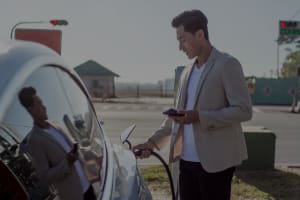The ‘Conference of Parties’ (COP) summits have been bringing together world leaders to discuss action on climate change for almost three decades. As we look to the COP26 conference in Glasgow, we’re at a pivotal moment in dealing with this challenge. At AECOM, we understand both the urgency and our responsibility to help our clients adapt and improve resilience, reduce their carbon emissions and achieve net zero ambitions.
At the same time, the recovery from the coronavirus pandemic presents an opportunity to invest in green infrastructure and bring about lasting change. To be a success, COP26 must clarify where investments and activities should be prioritized, transforming promises into funded and much-needed, widespread action. It is no longer enough for organizations to set ambitious net zero carbon targets without a clear pathway for how to achieve them.
For our part, we’ve adopted science-based emission reductions targets and were the first U.S.-based company in the engineering and construction sector to have our targets approved by the globally recognized Science Based Targets initiative (SBTi). Our Sustainable Legacies strategy, launched earlier this year to ensure that the work we do in partnership with our clients leaves a positive, lasting impact for communities and our planet, serves as a roadmap for our engagement.
COP26 is an opportunity for all of us to establish and cement the partnerships needed to make the transition to a carbon neutral economy work. At AECOM, we will be partnering with government departments and industry bodies, showcasing our work, contributing to panel discussions, and engaging with our clients to help them realize their own ambitious climate targets.
Implementing these efforts requires cooperation on many levels – between individuals, local communities, local government organizations, federal agencies, and nonprofit organizations. As the world’s most trusted infrastructure consulting firm, we’re best positioned to advise and execute for them – driving innovation in climate change, sustainable design and social value.
We’re excited to play our part in this global conversation and moment of climate action.

.jpg)



.png)




-1.png)


